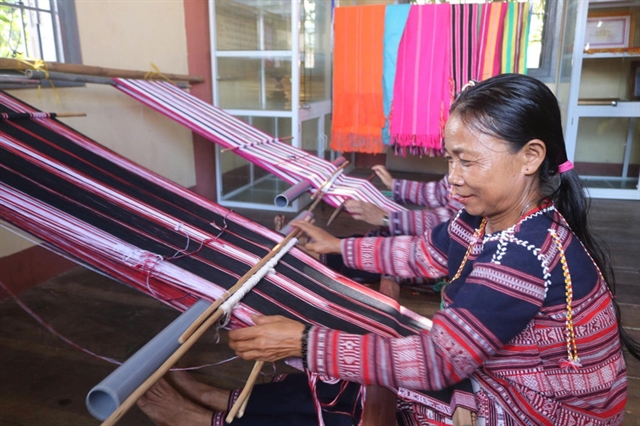 Life & Style
Life & Style


|
| Dr Brian McNaull. Photo courtesy of Family Medical Practice |
by Dr Brian McNaull*
Contagion
Influenza spreads in two main ways and it is worth noting that children are much more infectious than adults.
1. Droplet spread: an infected person sneezes or coughs disseminating the virus through droplets of mucus which enter directly into the eyes, nose or mouth of another person present within 1–2m. A sneeze or cough releases more than half a million viral particles.
2. Contact: Hand-to-eye/to-nose/to-mouth transmission, from contaminated surfaces or from direct personal contact.
Morbidity and mortality
Influenza spreads globally annually and symptoms may be mild to severe. This disease annually causes three to five million cases of severe illness and 290,000–650,000 deaths. Complications include viral pneumonia, secondary bacterial pneumonia, sinusitis, and the exacerbation of extant health problems such as asthma or heart failure. Death is commonest in the high risk groups: the young, the old, pregnant women and those with health problems including the immuno-compromised, transplant recipients, and individuals with severe chronic diseases. Smoking is another risk factor, as is air pollution. Common symptoms such as fever, headaches and fatigue are the result of the release of proinflammatory cytokines and chemokines that are produced by influenza-infected cells, In the United States it has been estimated that influenza annually causes approximately 36,000 deaths and more than 200,000 hospitalisations. The country's average annual economic cost is over US$11billion
Mutation necessitates annual vaccination
Due to influenza's high mutation rate, any particular vaccine usually confers protection for no more than a few years. Indeed, vaccine effectiveness is annually estimated at 25–60 per cent. For this reason, each year, the World Health Organisation predicts which influenza strains are likeliest to circulate in the next year hence allowing pharmaceutical companies to produce targeted vaccines. The vaccine does not include all active strains in any particular season, and it is thus occasionally possible for a new or overlooked and therefore non-included strain to become prevalent and widespread. The vaccine induces immunity after about two weeks. Seasonal influenza vaccination is cost-effective, especially in children and the elderly.
Influenza and flu vaccination in the COVID-19 era
Infection with one pathogen does not preclude co-infection with a second or more pathogens. This winter, in the likely absence of an effective COVID-19 vaccine, it is almost certain that influenza strains will circulate in conjunction with COVID-19. Thus far, it appears that with the current strains of these two viruses, the clinical outcome is not significantly worse than infection with COVID-19 alone. However it is now known that these two virus can co-infect the same patient. Very early experience shows co-infected patients did not fare worse compared to patients just infected with COVID-19. But the argument in favour of universal influenza vaccination would imply decreasing hospital stays due to complications and therefore alleviating the hospital and other health systems from the significant pressure of dealing with both COVID and influenza in the same period.
This year we will be facing a bigger challenge: seasonal influenza that is still not fully preventable, confounded by the COVID-19 pandemic. Children are susceptible to both, may become co-infected and can transmit both respiratory viruses to others. We still do not have full understanding of the immune response to these viruses. Immune dysregulation is one of the features observed in individuals presenting with severe COVID-19 disease and is likely the explanation for the inflammatory syndromes incorporating a spectrum of manifestations classically seen in Kawasaki disease and Toxic Shock syndrome re-ported in children. Presently, data on the clinical manifestations and severity of disease with influenza A and SARS-CoV-2 co-infection are very limited. Bacterial superinfection is one of the deadliest complications of influenza. Vaccination against influenza and pneumococcal disease will be important to mitigate these infections. This is especially important for children who are known to play an important role in the transmission of influenza and the pneumo-coccus to the elderly.
Lower COVID mortality following flu vaccination
A new study (retrospective cohort) involving over 92,000 patients with COVID-19 in Brazil shows that the odds of severe disease, ventilatory support requirement, and death are reduced with a recent trivalent flu vaccine. This seems to indicate that these vaccines should be used as widely as possible to reduce the risk of severe COVID-19, especially among high-risk groups. The researchers then looked at rates of death among vaccinated and non-vaccinated patients in the same facility. They found that the odds of dying of COVID-19 was lowered by 18 per cent in the flu-vaccinated group.
* Living in Hà Nội since 2006, Dr Brian is presently Medical Director of Family Medical Practice Hà Nội. Graduated in the UK, he practised medicine principally in Canada (1981-2005) before coming to Việt Nam. Postgraduate medical training includes Cambridge University (Chronic Disease Epidemiology and Biostatistics), University College London (Tropical and Infectious Disease) and University of Toronto Hospitals (Hospital for Sick Children – Hematology and Bone Marrow Transplant) and Mt Sinai Hospital (Hepatology – Clinical trials experimental liver/virology unit 1997-2006). He has conducted medical research, worked and lectured in various countries on infectious disease topics, epidemiology and liver disease (Canada, Việt Nam, Cambodia, Philippines). He is also the weekly co-host of Radio the Voice of Việt Nam’s (VOV5) ‘Doctor at Home’.
Family Medical Practice was the first foreign-owned primary healthcare provider in Việt Nam, and has consistently remained at the forefront of international-standard medicine since 1995. It offers extensive healthcare and emergency medical services nationwide to Vietnamese, expatriate and corporate customers.
For more advice on any medical topics, visit Family Medical Practice (FMP) Hà Nội at: 298 I Kim Mã St, Ba Đình Dist. Tel: (024) 3843 0748. Email: hanoi@vietnammedicalpractice.com
FMP’s downtown Hồ Chí Minh City location is: Diamond Plaza, 34 Lê Duẩn St, District 1; 95 Thảo Điền St, Distrist 2. Tel: (028) 38227848. Email: hcmc@vietnammedicalpractice.com.
FMP Đà Nẵng is located at 96-98 Nguyễn Văn Linh St, Hải Châu Dist, Đà Nẵng. Tel: (0236) 3582 699. Email: danang@vietnammedicalpractice.com




